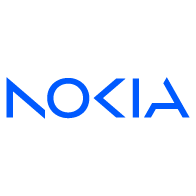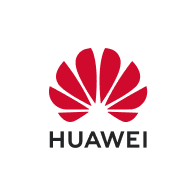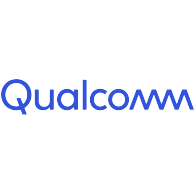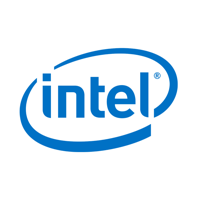-
5G
Showing 5G reports. View all reports
-
 Read more
Read more5G Radio Access System Design Aspects
Wireless data traffic will grow 10,000 fold within the next 20 years due to ultra-high resolution video streaming, cloud-based work,…
-
-
 Read more
Read moreMulti-Layer and Cloud-Ready Radio Evolution Towards 5G
Networks are on the threshold of a transformation driven by the demands of the Internet of Things (IoT) and…
-
-
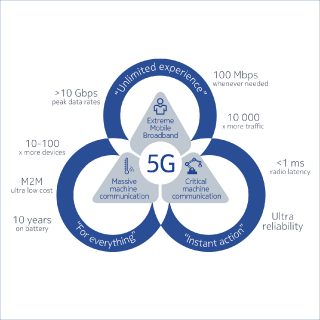 Read more
Read moreDynamic end-to-end network slicing for 5G
Dynamic end-to-end network slicing for 5G Nokia White Paper addressing 5G requirements for diverse services, use cases, and business models. Next-generation…
-
-
How 5G Technology Enables the Health Internet of Things
This report from the Centre for Technology Innovation at The Brookings Institution, covers how 5G differs from previous generations of advancement (3G and 4G), discussing emerging applications in health care, and demonstrating how these developments will enable new systems of care delivery. The report considers how connected medicine will help people get quality care through improvements in imaging, diagnostics, and treatment. Rather than having computing equipment that is disparate and separate, the 5G world will allow us to enter an era where real-time health services will become the norm rather than the exception. That will bring patients closer to a science fiction concept…Read more -
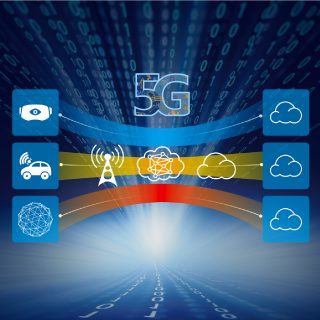 Read more
Read more5G Network Architecture – A High Level View – Huawei White Paper
In the 5G era, a single network infrastructure can meet diversified service requirements. A Cloud-Native E2E network architecture featuring agile,…
-
-
 Read more
Read morePaving the path to Narrowband 5G with LTE Internet of Things (IoT): Qualcomm
Paving the path to Narrowband 5G with LTE-IoT The Internet of Things (IoT) is bringing a massive surge of smart,…
-
-
 Read more
Read moreTowards 5G Software-Defined Ecosystems: IEEE paper
This is the second white paper from the IEEE on SDN. Techno-economic drivers are creating the conditions for a radical…
-
Experience centric video service of LGU+ IPTV
This presentation from LGU+ covers IPTV progress considering many applications including services features and the impact from LTE-Advanced Pro and 5G. ©2016 LGU+ This presentation is published on the GSA web site with the permission of the author.Read more -
 Read more
Read moreThe mobile industrial revolution: Forbes Insights report sponsored by Huawei
THE MOBILE INDUSTRIAL REVOLUTION ANTICIPATING THE IMPACT AND OPPORTUNITIES OF 5G NETWORKS ON BUSINESS This is a new report by Forbes Insights, in…
-
-
5G Roundtable: 5G Use Cases: Qualcomm
GSA hosted a 5G Round Table on the 28th June 2016 sponsored by Huawei and Intel. This presentation by Laurent Fournier, Senior Director, Business Development, Qualcomm Communications considered 5G use cases ©2016 Qualcomm. This presentation is published on the GSA web site with the express permission of the author. Qualcomm is an Executive Member of GSARead more -
-
5G Roundtable: The 5G Tactile Internet-Kings College London
GSA hosted a 5G Round Table on the 28th June 2016 sponsored by Huawei and Intel. This presentation by Professor Mischa Dohler FIEEE FRSA, Director of Centre for Telecommunications Research (CTR), King’s College London was a fascinating look at examples of the tactile Internet. ©2016 King’s College London. This presentation is published on the GSA web site with the express permission of the author.Read more -
5G Roundtable: 5G Innovation to Ignite the Connected World: Huawei
GSA hosted a 5G Round Table on the 28th June 2016 sponsored by Huawei and Intel. This presentation from Dr. Bing Honghan at Huawei covered how 5G is a catalyser for new business. ©2016 Huawei. This presentation is published on the GSA web site with the express permission of the author. Huawei is an Executive Member of GSARead more -
-
5G Roundtable: Mobile IoT/MTC 5G Spectrum Needs-Intel
GSA hosted a 5G Round Table on the 28th June 2016 sponsored by Huawei and Intel. This presentation from Resa Arefi at Intel considered 5G and areas of growth and spectrum needs for IoT. ©2016 Intel. This presentation is published on the GSA web site with the express permission of the author. Intel is an Executive Member of GSARead more -
-
5G Roundtable: Thinking about spectrum for 5G-Innovation Observatory
GSA hosted a 5G Round Table on the 28th June 2016 sponsored by Huawei and Intel. This presentation from Innovation Observatory looked at spectrum issues around 5G. ©2016 Inovation Observatory. This presentation is published on the GSA web site with the express permission of the author. Innovation Observator is a research partner of GSARead more -
 Read more
Read more5G for Mission Critical Communication: Nokia White Paper
5G for Mission Critical Communication: Nokia White Paper Mobile networks must meet new demands as human communications changes from click…
-
